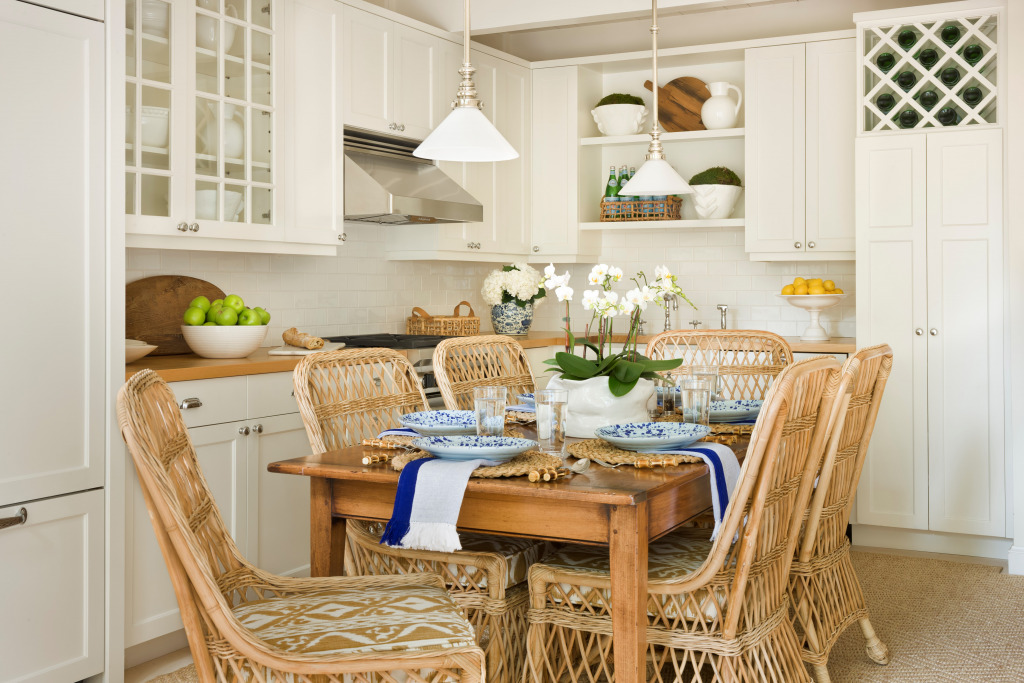Subscriber Benefit
As a subscriber you can listen to articles at work, in the car, or while you work out. Subscribe NowYou don’t have to be a design professional or style expert to know what some of the biggest decorating trends are for this year. Chances are, you’ve probably already used one or two of them in your home without even realizing it. In previous years, a specific color, a popular pattern or a new technology may have dominated homes and social media feeds; we’re still living with the aftershock of millennial pink and the resurgence of the Edison bulb.
In 2021, though, thanks in large part to a pandemic that has all of us spending more time at home, people are clamoring for versatility, comfort and a return to tradition. Think of these as anti-trend trends. And as someone who dislikes trends, I welcome the shift in the tide.
I spoke with several design experts about how the emphasis on comfortable, user-friendly spaces will affect home design in the coming year, and here’s what they had to say.
– Goodbye, single-use space
At the top of the trend forecast for 2021 is the extinction of the single-use room. The pandemic has transformed our homes into a hub for everything we used to seek elsewhere: gym, movie theater, restaurant, office, classroom, vacation spot. Your dining room or guest room (if you are fortunate enough to have either) is probably doubling as an office, classroom or gym. And this is not a trend that seems to be short-lived.
“The big trend is being at home,” says Todd Klein, a New York-based decorator. Klein, who has clients all over the world, has been swamped with requests to create multipurpose rooms and, importantly, spaces that can serve multiple generations. Klein says it’s not uncommon for three generations to be living together as a pod under one roof right now, so versatility has never been more important. Ground-floor family rooms have been transformed into spaces where an elderly parent can sleep, for example, and bedrooms have been rejiggered to house gym equipment and desk setups.
– Go big and go comfy
Not surprisingly, comfort is also trending. Alessandra Wood, vice president of style for Modsy, an online interior design service, predicts that the old-school Pottery Barn vibe, which was popular in the 1990s – picture Monica and Rachel’s apartment on “Friends” – will make a strong comeback.
She says to look for overstuffed furniture with softer curves. “Think sofas, sectionals and armchairs that have a comfortable look and feel, something that you could really curl up on and binge-watch TV or read a good book,” she says.
– The return of carpet
Tori Mellott, a longtime design editor and current style director at Schumacher, agrees that comfort is king for 2021. She predicts this will translate into a resurgence of people wanting wall-to-wall carpet.
“With everyone spending so much time at home, I think homeowners are desperate to maximize comfort and coziness in their space, and one way to do that is using wall-to-wall. It unifies a space and provides ultimate luxury underfoot,” Mellott says. “Wall-to-wall got a bad rap years ago, because many manufacturers used subpar materials, but,” she says, “there have been so many advancements in stain-resistant fibers and treatments that wall-to-wall has never looked or felt better.”
– Wood and natural materials
Mellott also says that traditional furniture is rising in popularity. “Mid-century furniture has reached a fever pitch with consumers, and it’s starting to feel tired and cold,” she says. “The market is saturated with knockoffs, and that particular style doesn’t feel special anymore.”
What people want, Mellott says, is classic antique furniture. The pandemic “has unwillingly thrust us into a chaotic and manic state, and for right now, brown furniture feels solid, sturdy and stalwart,” she says. “There is sometimes a comfort attached to something that has been passed down from generation to generation, something that has weathered many storms, so to speak.”
It’s not just traditional wood furniture that’s experiencing a renaissance. The preppy woven furniture associated with the Palm Beach style from the ’60s is also back, in the form of pieces made from natural materials like cane, jute, wicker and rattan. This is in part thanks to designers including Amanda Lindroth, Celerie Kemble, Aerin Lauder and Sarah Bartholomew, all known for their beautiful, breezy, island-inspired rooms.
Rattan dining chairs or a woven reed coffee table can give a vacation-like feel to a room – a vibe that is very much needed. “Using natural items has a calming effect and gives rooms oodles of texture,” Wood says. She also notes that the use of natural materials is in keeping with a rising interest in sustainability. “People are starting to think more and more about the environmental impact of home design, and many natural fibers are sustainably produced without leading to deforestation.”
It is worth noting that interest in traditional elements started well before the pandemic; wicker, rattan and brown, classic furniture are all primary design elements of the “grandmillennial” style, a trend I wrote about in May. But the pandemic has given strength to the movement. Many people find comfort in the familiar elements of their grandparents’ homes and want to replicate it in their own space. Wood predicts the granny style will be stronger than ever in 2021. She also says Victorian wallpapers and William Morris prints will enjoy a revival, and Victorian and neoclassical styles, which have been under the radar, will be popping up in homes.
But whatever the next revival is, it’s clear that what is old is new again. As Mellott says: “From your grandmother’s silver or china, to a chest of drawers that you picked up at a flea market, we are all looking for things that feel unwavering. We don’t want anymore fair-weather decorating trends.”
Please enable JavaScript to view this content.

